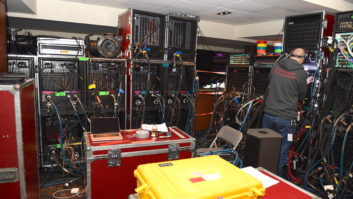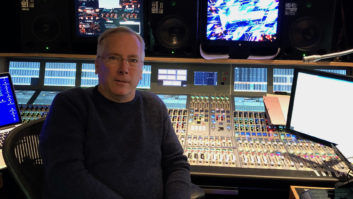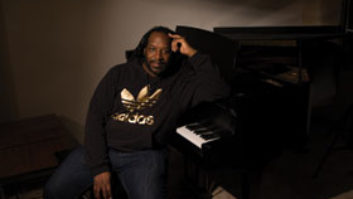
Los Angeles, CA (January 30, 2020)—This year’s Grammy Awards ceremony at the Staples Center in Los Angeles was watched by millions around the world, and while they were enjoying the musical numbers and acceptance speeches, they were also hearing the results of a digital signal path from the Digital 6000 wireless vocal mics to the mixing consoles, according to Grammy Awards audio coordinator Michael Abbott.
More than 20 channels of Sennheiser Digital 6000 RF were deployed in both production and MC capacities, distributed to various digital mixing consoles located throughout the venue across a dual redundant Dante network. According to Abbott, by combining the digital wireless microphone system and a Dante network as a transport protocol, the show achieved improved frequency response.
Grammy Production Awards Announced
“The mixers have commented on how they are able to do less EQ carving in the low-mid frequencies, and the extended high frequency response we are getting with the wireless mics is introducing low pass filtering—which we have not had to do in the past,” he said.
Abbott specified the Digital 6000 system for all the production and MC microphones at this year’s show. “We appreciate the frequency agility of the Digital 6000 in such an RF-intense environment,” he said. “This allows us to deploy multiple transmitters and receivers with reliable performance.”
“The RF on this show is complex to say the least,” added Jeff Peterson, PA designer of ATK Audiotek. “Monitoring, control, and flexibility are the features that help us the most, and we benefit considerably by the Digital 6000’s resistance to interference, in addition to its efficient use of bandwidth.”
Stephen Vaughn, coordinator for Soundtronics Wireless, ensured that all the wireless microphones and in-ear monitors worked in harmony with each other for the duration of the program. “The Digital 6000 is impressive,” he opined. “The amount of frequencies I can get in one TV channel is the part that really helps me out in today’s environment. Even if you don’t have a scope, you can just look at the quality meter on the front of the unit and tell whether or not you are taking on interference or not.
Sennheiser • www.sennheiser.com




